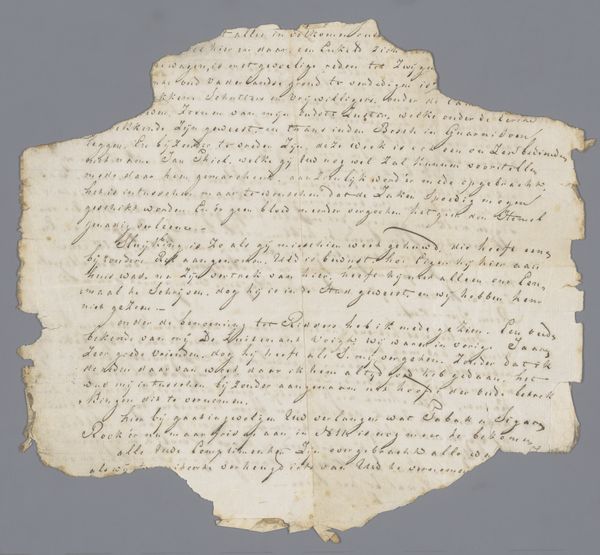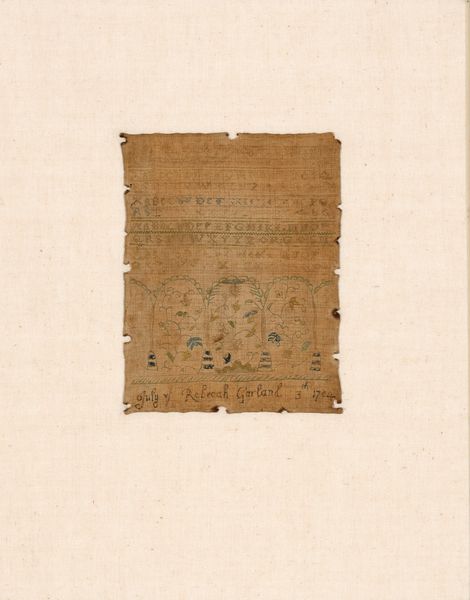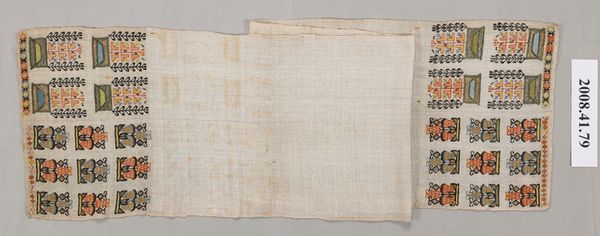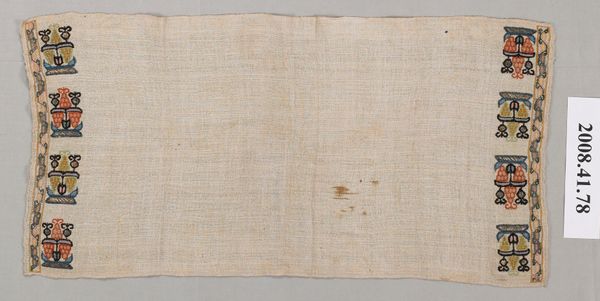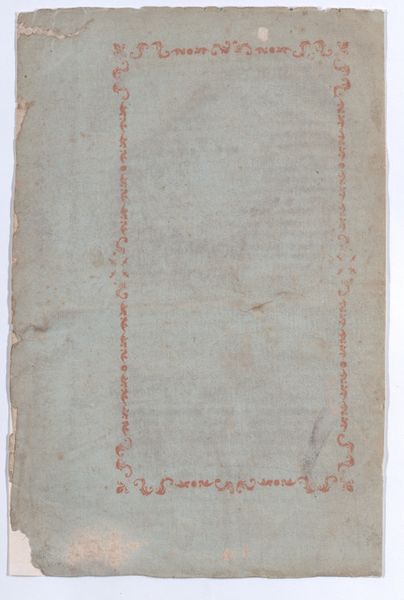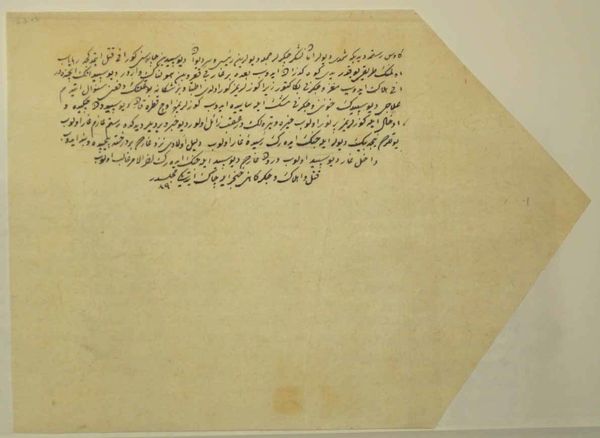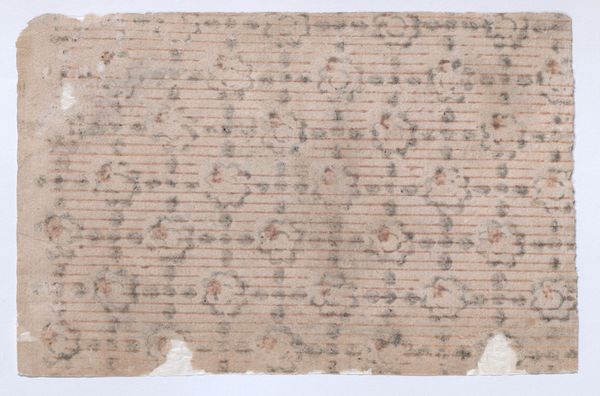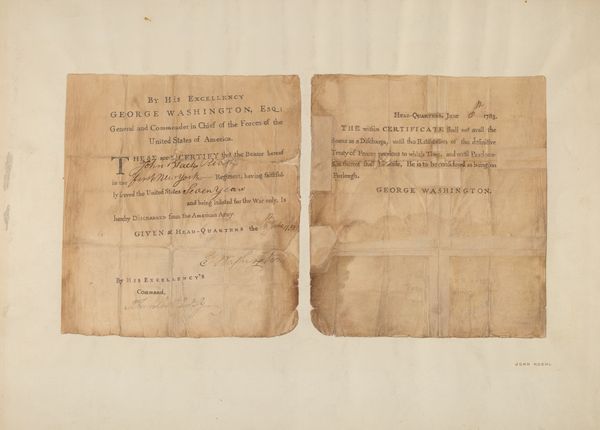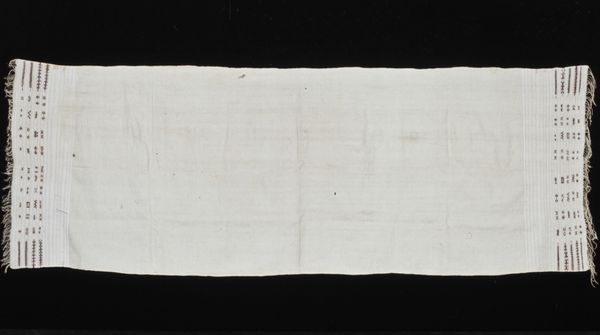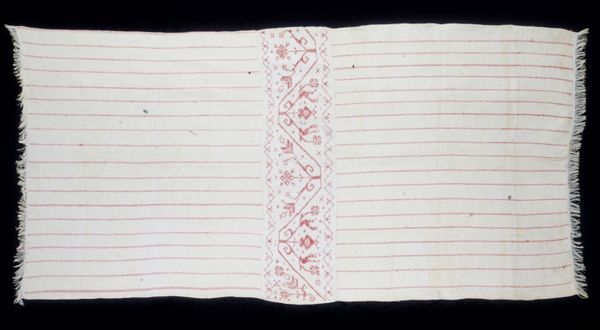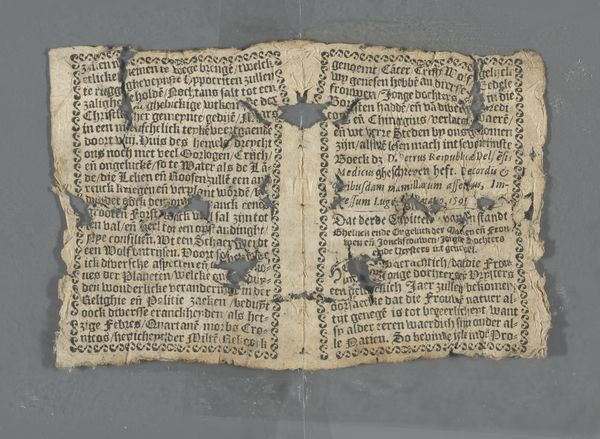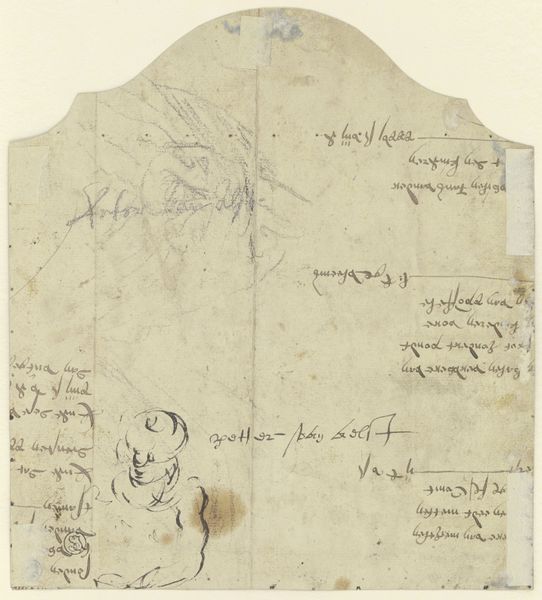
drawing, print, paper, ink
#
drawing
#
water colours
# print
#
paper
#
ink
#
coloured pencil
#
geometric
#
miniature
#
watercolor
Dimensions: height 120 cm, width 190 cm
Copyright: Rijks Museum: Open Domain
Curator: Today we're looking at J.C. Vergragt’s "Model of a Fore Topsail," dating back to 1843, created using print, ink, watercolour, and coloured pencil on paper. Editor: It strikes me as a strangely beautiful ruin. Delicate lines overlaying a faded, almost ghostly image of a sail. It feels less like a diagram and more like a memory. Curator: It's intriguing how the artist utilized multiple mediums to represent this specific maritime component. Consider the social context, too – a society deeply intertwined with maritime power, trade routes, and, importantly, the lives and labor of sailors. How do the materials reflect that reality? The fragility of the paper, juxtaposed with the complex network of inked lines... it speaks volumes about the precarious nature of life at sea. Editor: Precisely! And consider the act of representation itself. Why create a meticulously rendered model of just one element? I wonder about access, about who was making and viewing these kinds of images. Was it instructional, celebratory, or perhaps even a form of nostalgic longing for a way of life already in transition? We also shouldn't ignore that sailors at this time, mostly men, had their identity so entrenched in their profession as masculine laborers out at sea; a gendered dimension, indeed. Curator: That's where the medium becomes so critical to the narrative. The layering of watercolour and coloured pencil provides depth and nuance to what could have been a simple technical drawing. There's also a subtle elevation of the sailcloth through its texture and careful details. Someone made a conscious effort to present this object as more than just functional. Think about who possessed the skill and access to the materials to render such detail and craft a miniature likeness—was it from lived experience on the water? Editor: The presence of the grid, along with those repeated notations at the top—they introduce a layer of almost scientific observation into this depiction. Maybe it represents more abstract themes: control, navigation, or even colonial ambitions enacted through precise cartography? These sails not only helped navigate trade routes, but also carried a lot of power and global impact. Curator: I see your point. This drawing then moves beyond simply portraying an object of labour into a visualization of ambition and a way of living. Editor: Looking closely at its design, one almost can smell the salt water, even imagine the vast expanse. But, it also invokes the exploitation of human bodies that facilitated oceanic conquest at the time. Curator: Absolutely. And I think that duality is where its power lies, prompting questions of how production shaped society. Editor: I agree. "Model of a Fore Topsail" offers more than just maritime mechanics; it encapsulates histories, ideas, and cultural meanings that invite our attention even today.
Comments
No comments
Be the first to comment and join the conversation on the ultimate creative platform.
